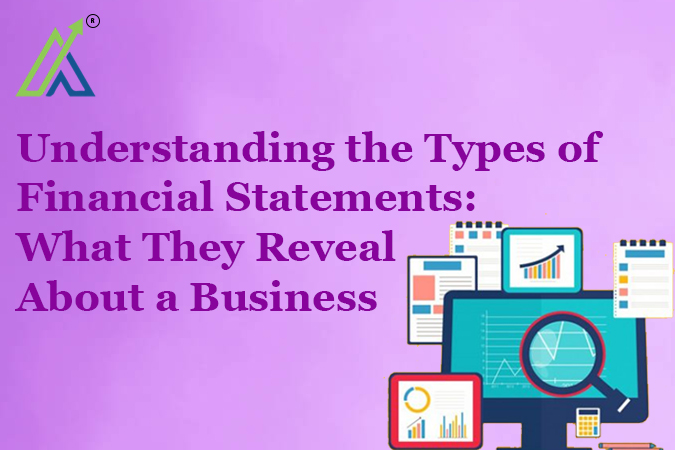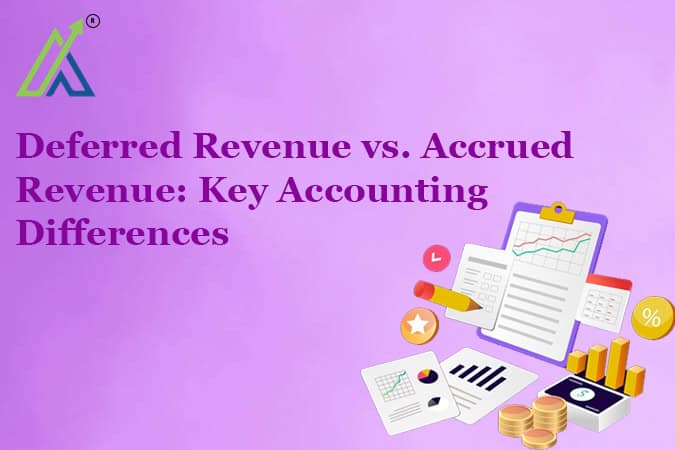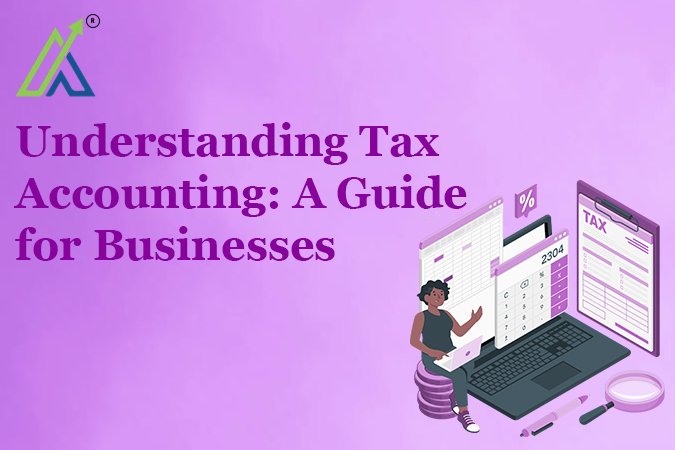Financial statements assist investors, regulators, and management in their decision-making processes. These serve as the documents that are used to view the company’s transparent view of its financial status and also its compliance with the Companies Act 2013 and Indian Accounting Standards (Ind AS). Additionally, financial statements are required for GST regulations, taxation, and financial expectations of investors. This guide will provide the information regarding the types of financial statements that are used in India and also what they offer to the companies.
Types of Financial Statements
Financial statements are standardized reports that summarize a business’s financial activities. In India, they are mandatory for registered companies and include:
Income Statement
Balance Sheet
Cash Flow Statement
Statement of Changes in Equity
Let’s delve into each, with examples tailored to Indian businesses.
Income Statement
This is also known as a statement of revenue and expense or a profit and loss statement. Income statement concentrates on the total revenue and expenses of the company over the duration of the accounting term. As a result, it assists in knowing the comprehensive financial performance within the specified accounting period.
Interestingly, revenue is calculated by adding together the money made from a company’s operational and non-operating operations. Revenues are generated and shown on a company’s income statement, but they are not receivables. However, overall expenses are the costs incurred as a result of the primary and secondary operations of such a business.
Key Components:
- Revenue: Total income from sales (e.g., GST-inclusive sales in INR).
- Cost of Goods Sold (COGS): Direct costs related to production.
- Gross Profit: Revenue – COGS.
- Operating Income: Gross Profit – Operating Expenses (salaries, rent).
- EBIT (Earnings Before Interest and Taxes): Operating Income + Non-operating items.
- EBITDA: EBIT + Depreciation + Amortization (non-cash expenses).
- Net Income: Final profit after taxes and interest.
Example:
ABC Manufacturing Pvt. Ltd., a Pune-based auto parts maker, reports:
- Revenue: ₹50 crore (post-GST).
- COGS: ₹30 crore (raw materials, labor).
- Gross Profit: ₹20 crore.
- Operating Expenses: ₹10 crore (marketing, admin).
- Operating Income: ₹10 crore.
- EBITDA: ₹12 crore (adds ₹2 crore depreciation on machinery).
- Net Income: ₹7 crore (after ₹3 crore in taxes and interest).
This shows ABC’s core profitability and efficiency in managing costs.
Balance Sheet
The balance sheet represents the information related to the company’s assets, finances, and also investment by the owners in that company.
Simply said, a company’s balance sheet should display all of its financial data, including its income, expenditure, left over, and whether or not it has spent more than it has earned.
Key Components:
- Assets: Resources owned (e.g., cash, Inventory, Accounts Receivable).
- Current Assets: Convertible to cash within a year (e.g., ₹5 crore in Inventory).
- Non-Current Assets: Long-term investments (e.g., machinery worth ₹20 crore).
- Liabilities: Debts owed (e.g., loans, Accounts Payable).
- Current Liabilities: Due within a year (e.g., ₹3 crore in Accounts Payable).
- Non-Current Liabilities: Long-term debt (e.g., ₹15 crore bank loan).
- Equity: Owner’s stake, including Retained Earnings and share capital.
Example:
XYZ Retail Ltd., a Delhi-based chain, reports:
- Assets: ₹100 crore (₹25 crore cash, ₹30 crore Inventory, ₹45 crore property).
- Liabilities: ₹60 crore (₹15 crore Accounts Payable, ₹45 crore long-term debt).
- Equity: ₹40 crore (₹30 crore share capital + ₹10 crore Retained Earnings).
This highlights XYZ’s liquidity and leverage.
Cash Flow Statement
A cash flow statement can be described as the statement that shows the company’s overall capital inflow in the nature of cash equivalents via core activities, investment dealings, and funding operations. Additionally, it represents the overall cash outlay through the activities outlined above.
The Cash Flow Statement tracks cash inflows/outflows across three activities:
- Operating: Core business activities (e.g., cash from sales).
- Investing: Asset purchases/sales.
- Financing: Loans, dividends, equity changes.
Key Metrics:
- Net Income (from Income Statement).
- Adjustments for non-cash items (Depreciation, Amortization).
- Changes in working capital (Accounts Receivable, Inventory, Accounts Payable).
Example:
Mumbai Tech Solutions Ltd. reports:
- Operating Cash Flow: ₹12 crore (Net Income ₹10 crore + ₹2 crore depreciation – ₹3 crore increase in Accounts Receivable).
- Investing Cash Flow: -₹8 crore (new software licenses).
- Financing Cash Flow: ₹5 crore (loan taken).
- Net Cash Flow: ₹9 crore.
This reveals how the company funds growth and manages liquidity.
Statement of Changes in Equity
The Statement of Changes in Equity is the financial adjustment between the opening and closing balance of the shareholder’s equity. This financial statement assists in abstracting the transactions associated with the shareholder’s equity throughout an accounting period. This report documents changes in share capital, including the issuance of new shares and dividend payments, as well as movements in retained earnings and other reserves.
Key Components:
- Opening Equity Balance.
- Net Income added to Retained Earnings.
- Dividends paid.
- New share issuances.
Example:
Chennai Pharma Ltd.
- Opening Equity: ₹50 crore.
- Net Income: ₹15 crore (added to Retained Earnings).
- Dividends Paid: ₹5 crore.
- Closing Equity: ₹60 crore.
This clarifies how profits are reinvested or distributed.
Questions to understand your ability
Q1.) What does the Income Statement do?
A) Tracks cash coming in and going out.
B) Shows the company’s financial status at one point.
C) Lists throughout the specified time frame the revenues, expenses, and profits of a corporation.
D) Shows how the company’s equity changes over time.
Q2.) Which of these is a non-current asset on the Balance Sheet?
A) Cash
B) Inventory
C) Machinery
D) Accounts Receivable
Q3.) What’s the main thing the Cash Flow Statement tracks?
A) Revenues and expenses
B) Assets, liabilities, and equity
C) Cash moving in and out from operating, investing, and financing activities
D) Changes in equity
Q4.) How do you calculate Net Income in the Income Statement?
A) Revenue – COGS – Operating Expenses – Taxes and Interest
B) Revenue – Operating Expenses – Depreciation
C) Revenue – EBIT – Taxes
D) Operating Income + Depreciation
Q5.) What’s included in the Statement of Changes in Equity?
A) Revenue from sales
B) Non-current liabilities
C) Net income added to retained earnings and dividends paid
D) Machinery purchases
Conclusion
In the competitive market of India, financial statements are absolutely essential instruments. The Income Statement reveals profitability; the Balance Sheet evaluates stability; the Cash Flow Statement guarantees liquidity; the Statement of Changes in Equity records ownership movements. Taken together, they enable stakeholders to follow rules like Ind AS, make wise judgments, and propel environmentally friendly development. Whether you are examining a family-owned SME or a listed behemoth like Reliance, understanding these ideas can help you to release the actual potential of a company.
FAQ's
The Income Statement shows how much money the company made, spent, and profited during a specific time. It’s your go-to for knowing if the company’s actually making money.
It includes Revenue, COGS, Gross Profit, Operating Income, EBIT, EBITDA, and Net Income. These tell you the financial health and profit levels.
It’s a snapshot of what the company owns (assets), owes (liabilities), and the value left for owners (equity) at a certain point.
Current Assets can be turned into cash within a year, like inventory. Non-Current Assets are long-term investments, like machinery, expected to last longer.
It shows where the company’s cash is coming from (operations, investments, financing) and where it’s going. It’s all about cash flow, not profits.
Net Income is what’s left after all expenses (taxes, costs, interest) are deducted from the total revenue. It’s the final profit.
It tracks changes in the company’s equity, like profits, new shares, dividends, and retained earnings. It shows how the owners’ stake is growing or shrinking.
It shows how the company’s value is shifting. Are the owners making money or losing out? This statement tells you.





